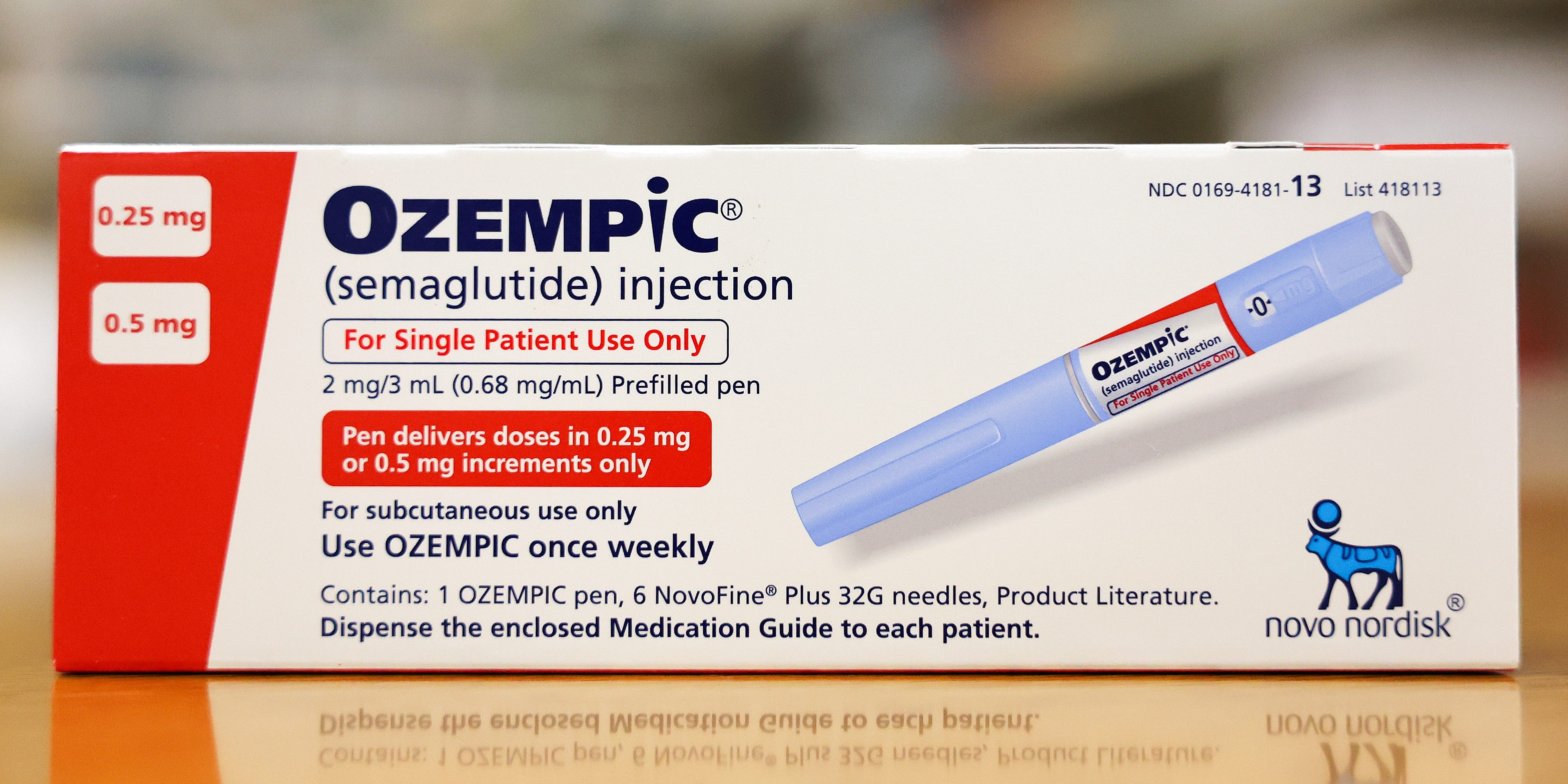The rise of GLP-1 drugs is driving consumer staples stocks lower as patients eat less food.Shares of PepsiCo, Coca-Cola, Walmart, and Costco have been slammed on the prospect of less food demand.The CEO of Walmart’s US division said they are already seeing patients using GLP-1 drugs buy less food at the retailer. Loading Something is loading.
Thanks for signing up!
Access your favorite topics in a personalized feed while you’re on the go.
Consumer staples stocks have been slammed this week as investors try to size up the potential negative impact GLP-1 drugs like Ozempic, Wegovy, and Mounjaro could have on food companies.
Shares of PepsiCo and Coca-Cola fell 6% this week, McDonald’s lost 5%, and top food retailers like Walmart and Costco fell as much as 4% on Friday alone despite the session’s broader market rally.
The wave of selling was initially sparked by comments from Walmart’s US CEO John Furner, who told Bloomberg on Wednesday that he is already seeing an impact from the GLP-1 drugs.
“We definitely do see a slight change compared to the total population, we do see a slight pullback in overall basket [size]. Just less units, slightly less calories,” he said.
Walmart is the top food and grocery retailer in the US. And through its pharmacy unit, the company is able to use anonymized data to analyze the spending habits of its customers that are currently taking GLP-1 drugs.
The drugs, which are approved for indications including diabetes and obesity, help patients feel fuller faster.
“When you go on GLP-1, you eat significantly less and you feel fuller. So you lose the weight,” Baird analyst Jeff Johnson told Insider last month.
And a recent Morgan Stanley survey of 300 patients who are taking the GLP-1 drugs echoed the idea that when you’re on them, you eat less and therefore, you buy less food. The survey found that 77% of respondents visited fast-food restaurants less frequently, and that calorie intake fell 20%-30% on a daily basis.
In a Friday note, Bank of America estimated that GLP-1 drugs could quell addictive behaviors among consumers, leading to an overall decline in consumption of snacks and beverages. That’s bad news for soda companies like Coca-Cola, and it could be a double whammy for PepsiCo, which sells both sodas and snacks.
“Based on our US calorie consumption model, calorie and consumption reductions could be in the 1% to 3% range… We see highest risk to alcohol, snacking relative to meals, and non-alcoholic beverages,” Bank of America said.
And while retailers like Walmart and Costco, which both operate a network of in-house pharmacies, could see a sales boost from filling GLP-1 prescriptions, the profits will be less noticeable because of the lower margins for branded drugs.
About 10 million Americans are currently taking a GLP-1 drug. That number could increase significantly over time as supply shortages of the drug are resolved, indications for the drugs expand, and especially if health insurance companies increase coverage for the drugs.
YCharts
